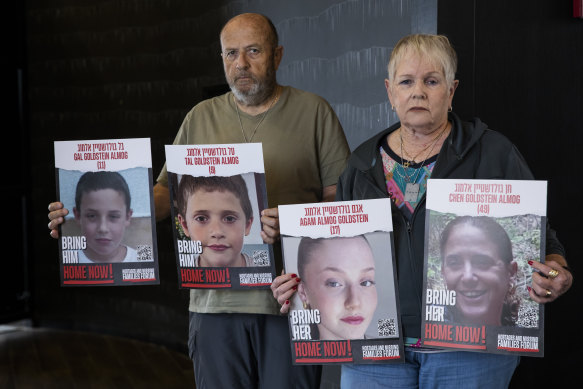This was published 5 months ago
What we know about the Israel-Hamas deal
By Karen Zraick, Aaron Boxerman and Isabel Kershner
A deal between Israel and Hamas for a temporary ceasefire is expected to go into effect on Friday. Here is a closer look at the agreement, mediated in part by Qatar, and how it is expected to play out.
What’s in the deal?
The agreement is for at least a four-day pause in hostilities. During that time, at least 50 women and children – from the roughly 240 people who Israeli officials say were abducted October 7 – would be exchanged for 150 Palestinian women and minors imprisoned in Israeli jails.
The deal also includes an increase in humanitarian aid for the Gaza Strip, but Qatar’s Foreign Ministry did not release details. Hamas said Thursday that 200 trucks carrying relief supplies and four fuel trucks would enter the territory each day during the four-day pause. Israeli officials did not immediately comment.
Israel said its warplanes would not fly over southern Gaza for the duration of the ceasefire, and would not fly over the northern part of the territory for six hours each day.
How is it being carried out?
The pause is expected to begin at 7am Gaza time (4pm AEDT) on Friday, Qatar’s Foreign Ministry spokesperson, Majed al-Ansari, said Thursday, which Hamas confirmed. Al-Ansari said a first group of 13 hostages would then be released starting at 4pm, in exchange for an undisclosed number of Palestinian prisoners.

David and Varda Goldstein with photos of their grandchildren, Gal, Tal and Agam, and their mother, Chen, who were kidnapped on October 7.Credit: Getty
Each day of the pause, Israel and Hamas will receive lists of the hostages and prisoners to be released, with Qatar passing them between the two parties, according to al-Ansari. He said the International Committee of the Red Cross would be designated to receive the hostages, although he gave no further detail on the group’s role or where the hostages would cross the border.
The Israeli government has said the hostages would be freed in four groups during the truce, each with at least 10 people.
An Israeli official who spoke on condition of anonymity on Wednesday said hostages turned over by Hamas would be taken to hospitals, and the seriously injured transported by helicopter. Those younger than 12 will be met at the border by their families, the official said, while older hostages will meet their families at hospitals, where they will also be debriefed by security services.
The official said the Palestinians to be released from Israeli prisons – most of them from the West Bank – will be taken by bus to their home districts. It was unclear whether they, too, would be set free in stages, but the official said the first would be released before any Israeli hostages.
Who are the Palestinian prisoners?
The Israeli government this week published a list of 300 names – all people aged 18 and younger, or women – of Palestinian prisoners being considered for release. It was not immediately known who would be among the 150 to be released.
All the names on the list were described as “security prisoners”, or people who had been arrested in connection with offences against national security. The prisoners are accused of offences including supporting terrorism, acts of violence and throwing stones. There are also several charges of attempted murder. Most of the prisoners on the list had not been convicted of the charges.
There were 32 women and girls listed, including two 18-year-olds and a 15-year-old. Of the boys, 144 are aged 18, and 123 are between 14 and 17.
Who are the hostages being freed?
The Israeli prime minister’s office said it had received an initial list of names of the hostages who would be released and had contacted their families. It did not specify how many names were on that list.
At least 36 children and teenagers, ranging in age from infancy to the final year of high school, are being held in Gaza, and little is known about their whereabouts or wellbeing. Some, but perhaps not all of them, are expected to be among the hostages released in the coming days.
White House officials said Tuesday that they expected the agreement to include the release of three Americans: two women and a toddler.
This article originally appeared in The New York Times.
Get a note directly from our foreign correspondents on what’s making headlines around the world. Sign up for the weekly What in the World newsletter here.